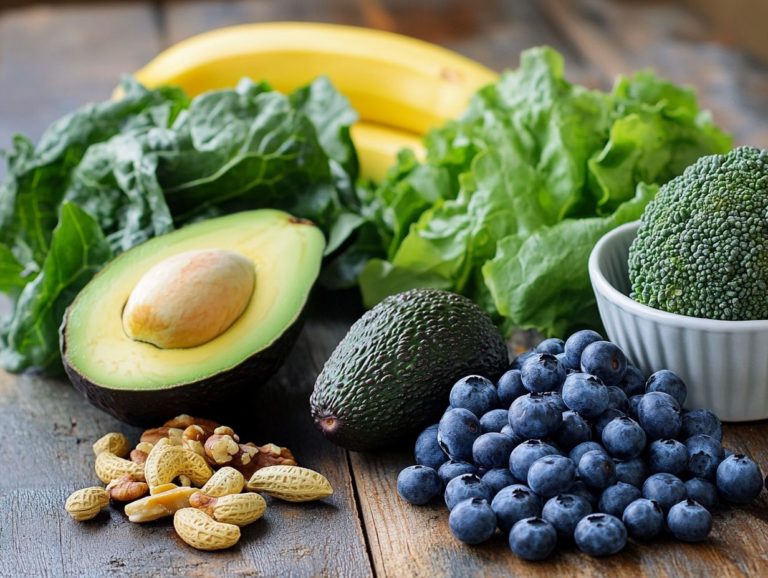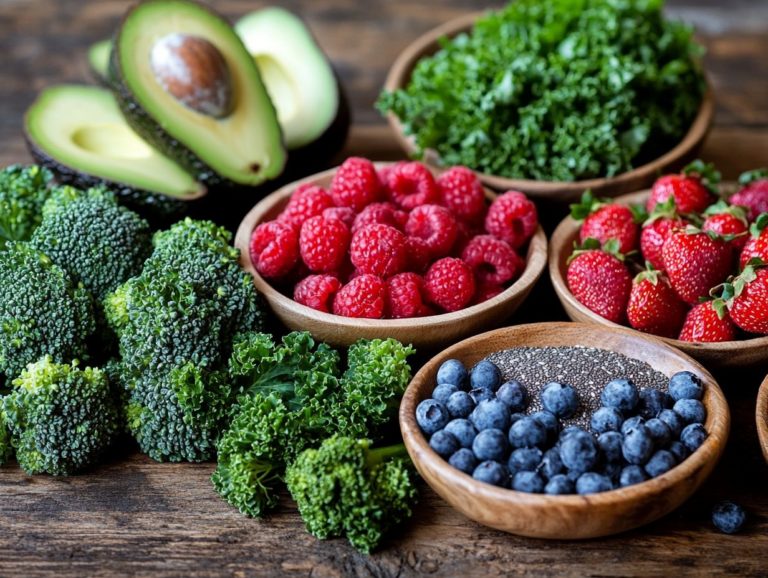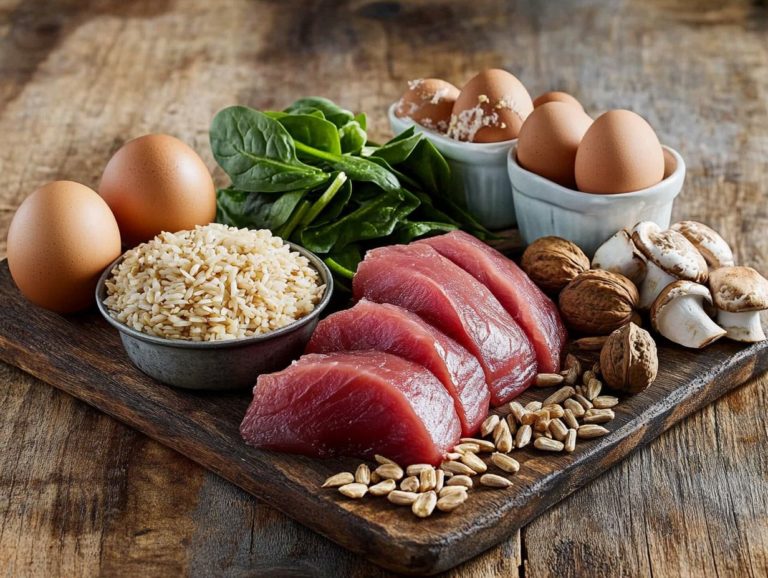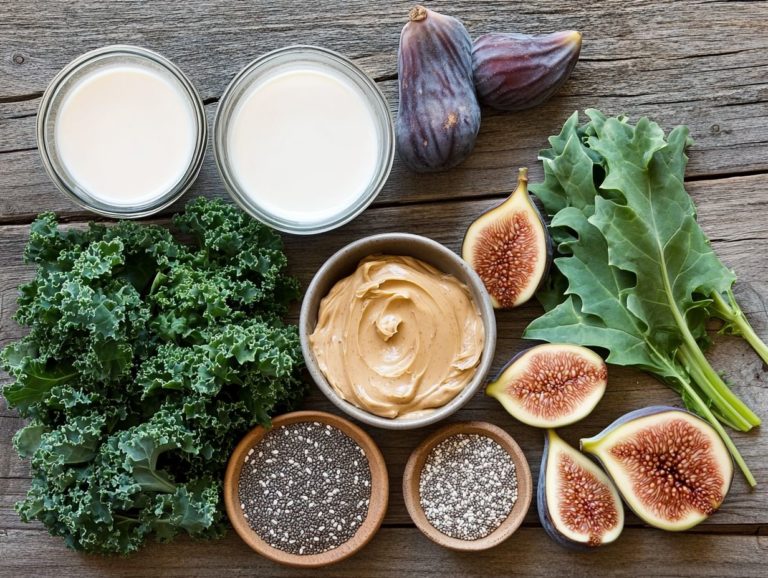5 Best Sources of Nutrients for Children
Nutritional needs play an important part in your child’s growth and development. They influence everything from physical health to cognitive abilities. By providing the right foods, you can help ensure that your kids thrive and maintain a well-balanced diet.
This article presents the five best sources of essential nutrients: milk and dairy, fruits and vegetables, whole grains, lean proteins, and healthy fats. We ll explore the significance of these nutrients, address common deficiencies, and share creative tips to make nutritious eating enjoyable even for the pickiest eaters.
Embark on this journey to guarantee your child receives the nourishment they truly deserve!
Contents
- Key Takeaways:
- 1. Milk and Dairy Products
- 2. Fruits and Vegetables
- 3. Whole Grains
- 4. Lean Proteins
- 5. Healthy Fats
- Why Are Nutrients Important for Children’s Growth and Development?
- How Can Parents Ensure Their Children Are Getting Enough Nutrients?
- What Are Some Common Nutrient Deficiencies in Children?
- How Can Picky Eaters Get the Nutrients They Need?
- What Are Some Creative Ways to Incorporate Healthy Foods into Children’s Meals?
- What Are Some Nutrient-Dense Snack Options for Children?
- Frequently Asked Questions
- What are the 5 best sources of nutrients for children?
- Why are fruits important for children’s nutrition?
- How do vegetables benefit children’s health?
- What makes whole grains a crucial part of a child’s diet?
- Why should dairy products be included in a child’s diet?
- What are some examples of lean proteins for children?
Key Takeaways:
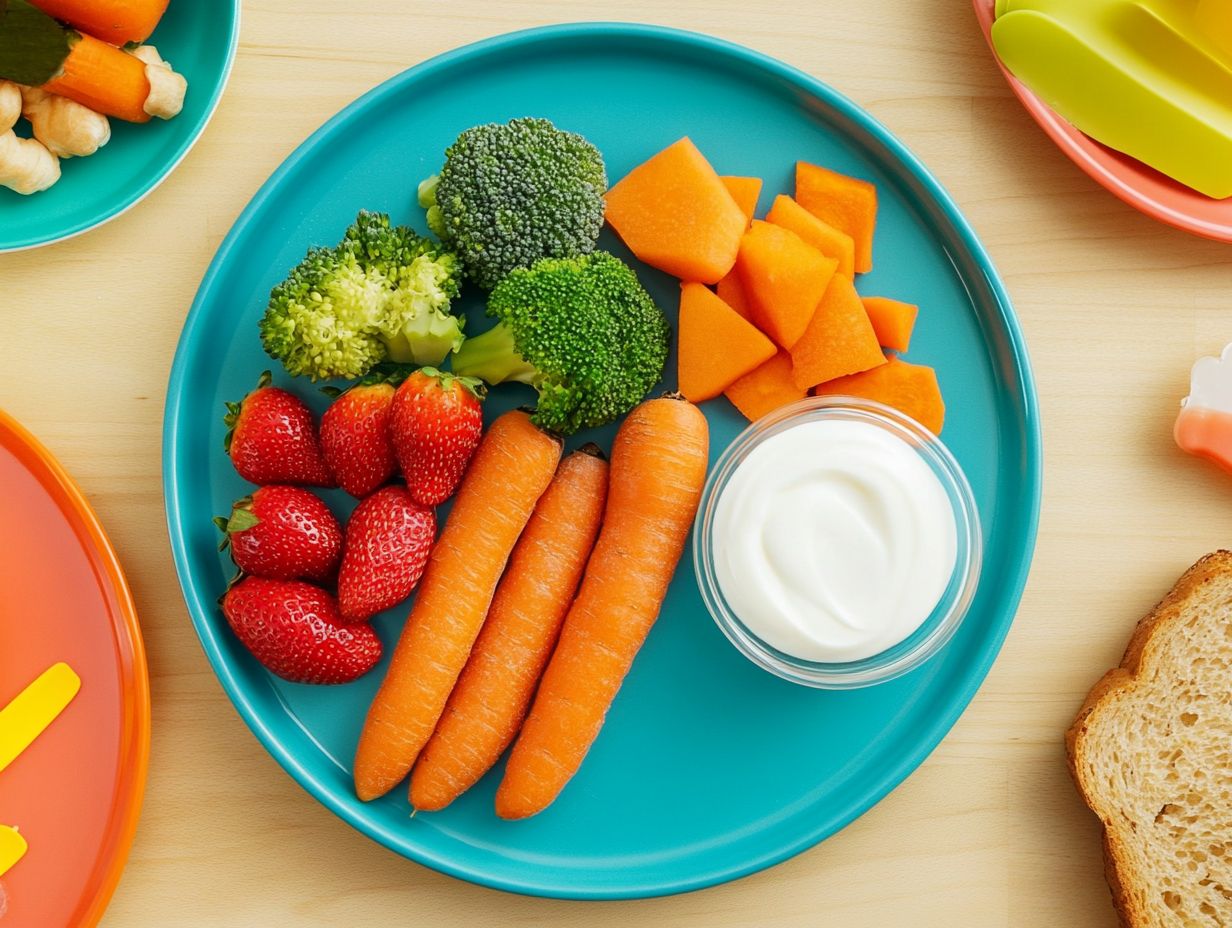
- Milk and dairy provide calcium and vitamin D.
- Fruits and veggies are packed with essential vitamins and minerals.
- Whole grains offer B vitamins and fiber.
1. Milk and Dairy Products
Milk and dairy are critical for a child’s diet. They offer essential nutrients like calcium, vitamin D, and protein key for healthy growth and development during formative years.
Ensuring your children receive these nutrients helps build strong bones and supports their immune system, promoting overall health. Yogurt is an excellent source of helpful bacteria that support digestion, while cheese adds a delightful flavor to various dishes.
Incorporating dairy into meals is easy. Consider a smoothie made from yogurt and fruits for breakfast, or sprinkle cheese on salads or sandwiches for extra flavor.
Engage your children with fun recipes like homemade pizza topped with cheese or yogurt parfaits. This can spark their interest in nutrient-rich foods and help them meet their daily dietary needs.
2. Fruits and Vegetables
Incorporating a variety of fruits and vegetables into your children’s diets is essential. These colorful gems are full of vital vitamins, such as A and C, along with dietary fiber, promoting healthy eating habits and overall well-being.
A vibrant selection makes meals visually appealing and encourages your children to explore new flavors. Each hue in fruits and vegetables signifies unique nutrients; for example, orange foods like carrots are excellent for vision, while leafy greens help bone health.
To make healthy eating an adventure, whip up lively smoothies packed with these ingredients or transform salads into artistic delights using cookie cutters. Engaging your children in meal preparation can ignite their curiosity about nutrition and inspire them to embrace these nourishing foods.
3. Whole Grains
Whole grains are an important source of carbohydrates and fiber for children. They provide vital nutrients like magnesium and potassium, which promote growth, support digestion, and maintain energy levels throughout the day.
Options like brown rice, oats, and quinoa shine with distinct nutritional benefits. Brown rice offers robust flavor and B vitamins, oats are renowned for their soluble fiber, and quinoa contains all nine essential amino acids, making it a complete protein.
Introduce these tasty options now for a healthier future! Replace refined grains with whole alternatives in beloved dishes like stir-fries, breakfast bowls, or baked goods. This simple adjustment boosts the nutritional profile of meals and fosters lifelong healthy eating habits by exposing children to a variety of flavors and textures.
Start today by adding these foods to your child s meals!
4. Lean Proteins
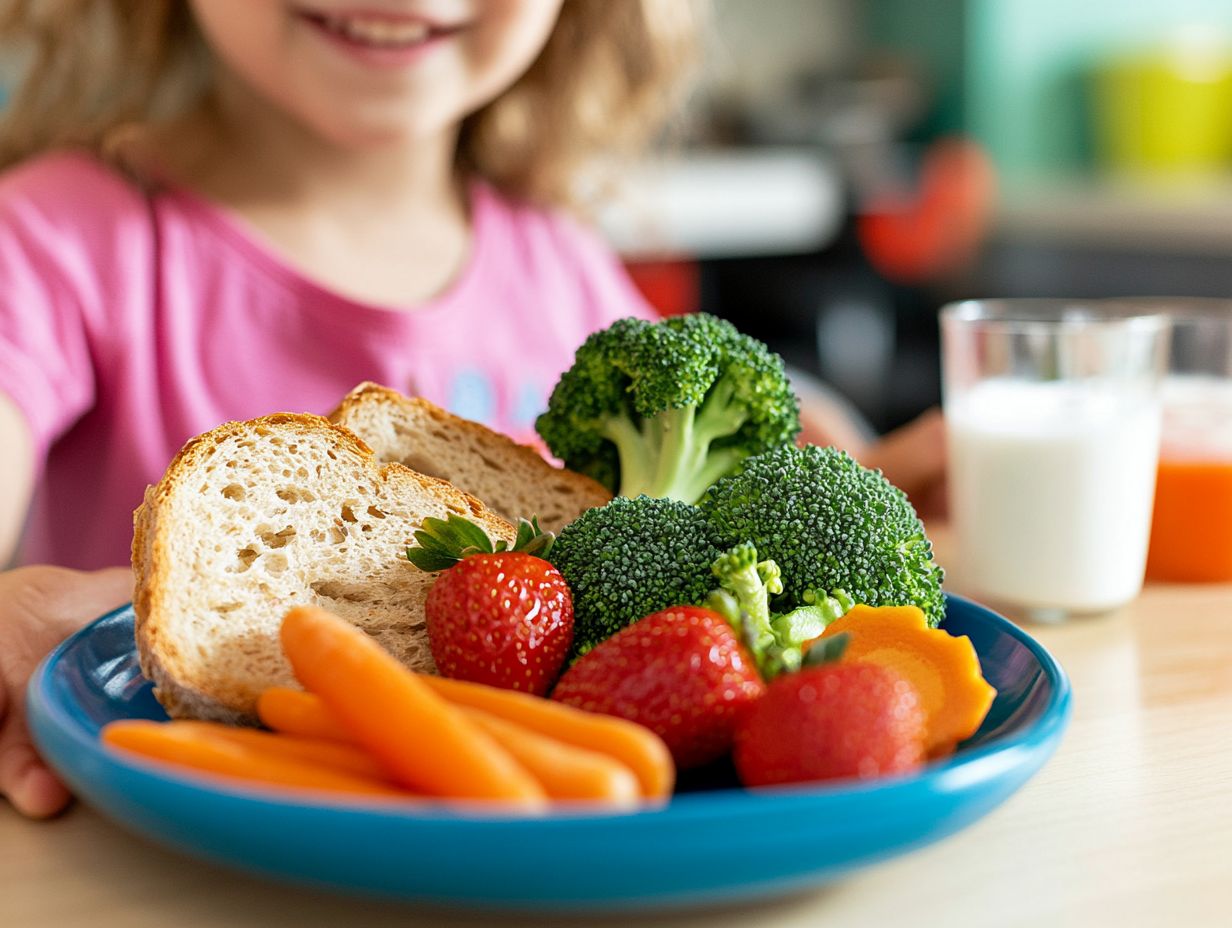
Incorporating lean proteins into your child’s diet is essential. These proteins provide crucial amino acids for growth and development.
They also offer vital minerals like iron and zinc, which strengthen the immune system and promote overall health.
You can find lean proteins in foods like chicken, fish, legumes, and eggs. Each offers unique flavors and nutrients to enrich meals.
Chicken is a versatile staple, while fish provides omega-3 fatty acids, which are beneficial for brain function.
Legumes, including lentils and beans, deliver protein and fiber for digestive health. Eggs are an excellent source of complete protein, supporting muscle development.
Combining these ingredients creates balanced meals. This ensures your children receive the nutrition they need for their active lifestyles.
5. Healthy Fats
Healthy fats are essential in your child’s diet. They deliver crucial fatty acids and fat-soluble vitamins like E and K.
These nutrients are vital for brain development, hormone production, and absorbing other important nutrients.
Include sources like avocados, nuts, seeds, and olive oil to enhance meals. These ingredients add delightful textures and flavors.
Avocados provide a creamy consistency, perfect for salads and spreads. Nuts and seeds bring a satisfying crunch.
Incorporating healthy fats ensures your children get the essential nutrients for growth. Eating well can be both delicious and beneficial.
Why Are Nutrients Important for Children’s Growth and Development?
Nutrients are fundamental to your child’s growth and development. They help build strong bones, support the immune system, and ensure all bodily systems function properly.
Vitamins and minerals like calcium, iron, and essential fatty acids promote optimal health. A balanced diet rich in fruits, vegetables, whole grains, and lean proteins is crucial.
Without adequate nutrition, children may face physical setbacks, such as stunted growth or weakened immunity. They can also experience cognitive challenges that hinder learning and behavior.
To promote well-rounded development, prioritize diverse meal options and ensure proper hydration. Consider dietary supplements when necessary.
Involve your children in meal planning and preparation. This can cultivate healthy eating habits and improve their overall well-being.
How Can Parents Ensure Their Children Are Getting Enough Nutrients?
As a parent, you play a key role in ensuring your children get the nutrients they need. Foster healthy eating habits by incorporating nutrient-dense foods for a healthy diet and follow guidelines from organizations like the USDA and the American Academy of Pediatrics.
Meal planning is an effective strategy. It saves time and allows you to choose nutritious options that appeal to your kids.
Gradually introduce new foods by pairing them with familiar favorites. This makes the process less daunting.
Involve your kids in cooking. This can spark their interest in food and turn mealtime into an engaging family activity.
Set a positive example with your own food choices. Show that healthy eating is both beneficial and enjoyable.
What Are Some Common Nutrient Deficiencies in Children?
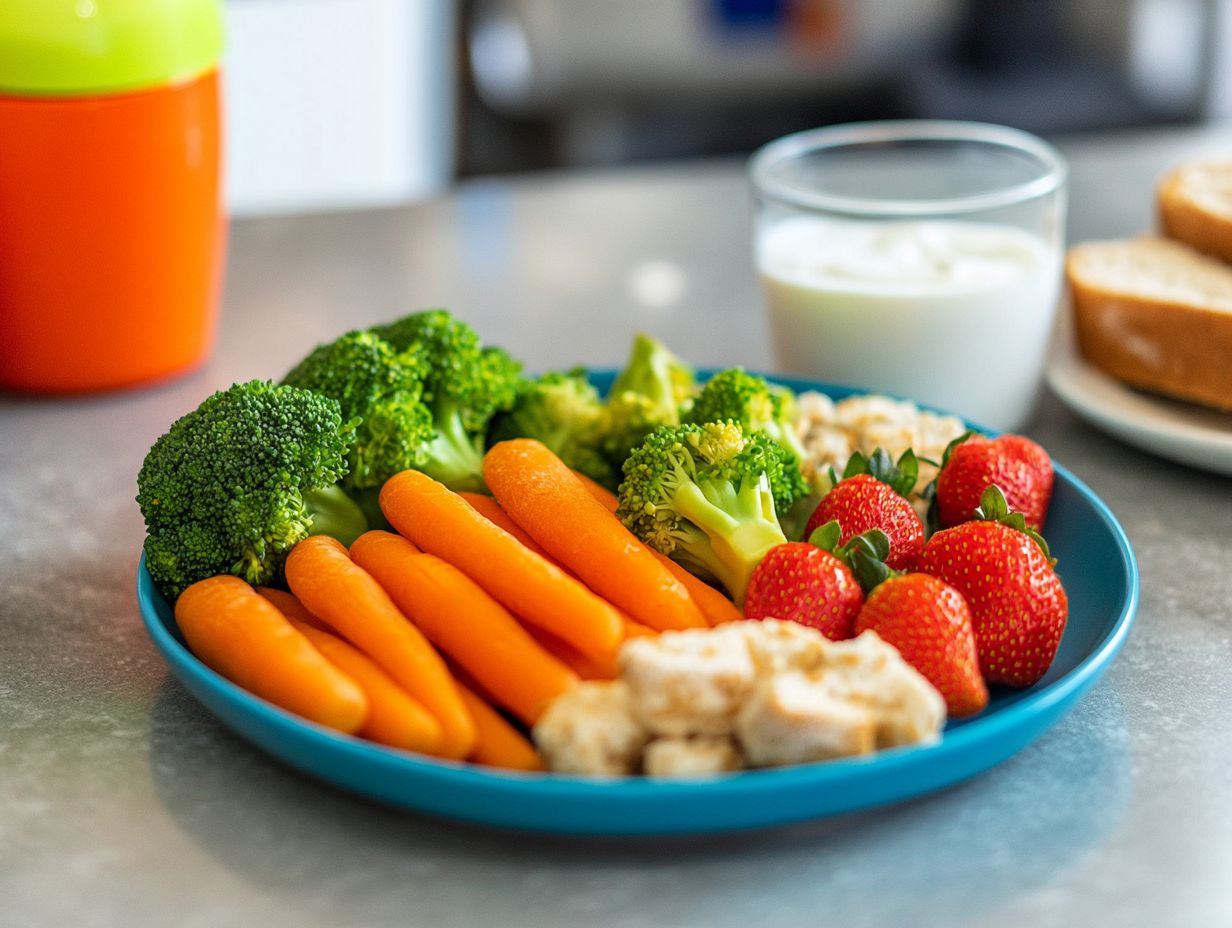
Common nutrient deficiencies in children include vitamin D, iron, zinc, and calcium. These deficiencies can significantly impact their health, affecting bone strength and immune function. This highlights the importance of a well-rounded diet.
You might notice these deficiencies manifesting as fatigue, irritability, or frequent illnesses symptoms that can easily fly under the radar for parents. The long-term consequences can be severe, potentially leading to stunted growth, developmental delays, and a greater susceptibility to chronic diseases later in life.
As a parent, you play a crucial role in addressing these issues. By staying vigilant about your child s eating habits and recognizing the signs of deficiency, you can make a difference. Adjusting meal plans to include healthy foods or considering supplements can be effective strategies.
Talk to a healthcare professional to ensure your child s diet is healthy and balanced.
How Can Picky Eaters Get the Nutrients They Need?
Picky eaters can certainly pose a challenge for you as a parent trying to ensure your child gets the nutrients they need. However, with some creative strategies, you can introduce healthy foods in a way that makes eating enjoyable and appealing.
- One effective approach involves sneaking vegetables into delicious smoothies, where vibrant fruits can easily mask the taste of greens while still delivering essential vitamins.
- Another fun tactic is to grab some cookie cutters and craft fruits and vegetables into exciting shapes. This little trick can spark your child’s curiosity and encourage them to engage more at mealtime.
- Involve your children in meal preparation. This is a great way to cultivate a sense of ownership, making them more likely to sample new foods.
Throughout this journey, remember that developing healthy eating habits takes time and consistent support. Patience and persistence are key.
What Are Some Creative Ways to Incorporate Healthy Foods into Children’s Meals?
Can you imagine colorful fruit skewers making snacks fun? Incorporating healthy foods into your children’s meals can become a delightful adventure with a few creative twists. Picture vibrant vegetable-rich smoothies or fun, healthy snacks that entice them to explore new flavors and textures.
By transforming standard meals into engaging culinary experiences, you can ignite their curiosity and expand their palate. Imagine arranging a rainbow salad that invites your little ones to pick their favorite colors or using whimsical cookie cutters to shape whole-grain sandwiches there are endless possibilities.
You can even elevate simple dishes to appealing masterpieces by decorating plates with edible flowers or introducing dips that add both color and flavor.
Ultimately, finding the right balance between nutrition and presentation encourages a lifetime of healthy eating habits while nurturing creativity and independence in young eaters.
What Are Some Nutrient-Dense Snack Options for Children?
Opting for nutrient-dense snacks is an excellent strategy to ensure that children receive essential vitamins and minerals throughout the day. Think yogurt with fruit, hummus paired with veggies, or nut butter spread on whole-grain bread; these options offer a delightful balance of fiber and protein, along with the 5 best whole foods for better nutrition.
These snacks do more than just satisfy cravings; they actively support growth and development, making them ideal for busy, energetic youngsters. Incorporating fresh fruits, nuts, or even homemade energy bars can introduce variety to snack times, keeping children engaged and excited about their meals.
You can easily prepare snack packs filled with sliced apples, whole grain crackers, and cheese cubes, ensuring that healthier options are always within reach.
By providing these nutritious choices, you lay the groundwork for kids to develop positive eating habits that can last a lifetime, playing a crucial role in their overall well-being.
Frequently Asked Questions
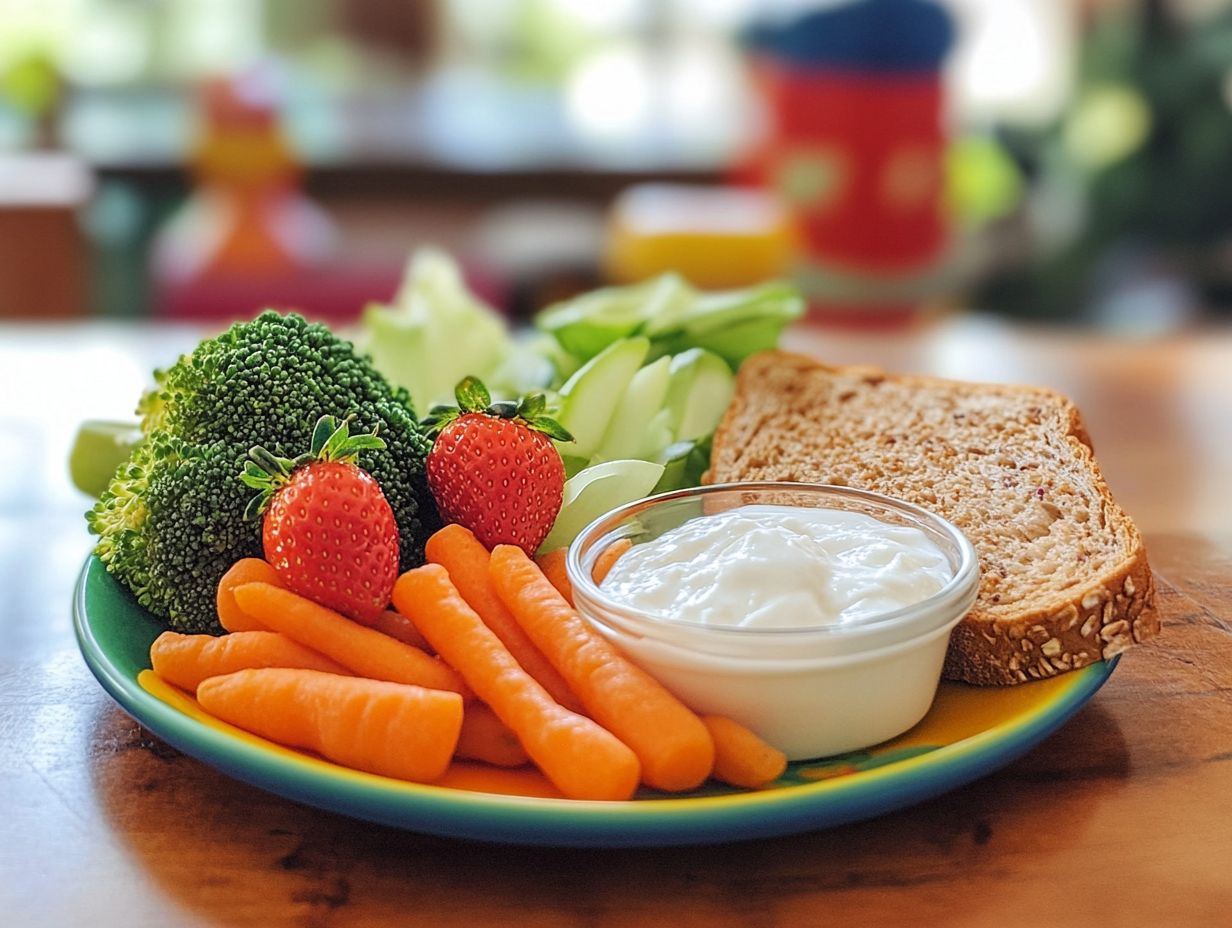
Check out our recipes for more healthy meal ideas!
What are the 5 best sources of nutrients for children?
The top 5 sources of nutrients for kids are fruits, vegetables, whole grains, dairy, and lean proteins!
Why are fruits important for children’s nutrition?
Fruits are packed with vitamins, minerals, and fiber. They provide energy and help stave off diseases!
How do vegetables benefit children’s health?
Vegetables are powerhouses of essential nutrients. Eating a variety helps kids maintain a healthy weight and boosts their immune system.
What makes whole grains a crucial part of a child’s diet?
Whole grains offer good carbs and fiber. They give kids energy, assist digestion, and support brain development!
Why should dairy products be included in a child’s diet?
Dairy is key for strong bones and teeth because of its calcium. It also delivers protein and vital vitamins for growth!
What are some examples of lean proteins for children?
Lean proteins include:
- Chicken
- Fish
- Beans
- Lentils
- Tofu
- Eggs
These foods fuel healthy growth and development!

